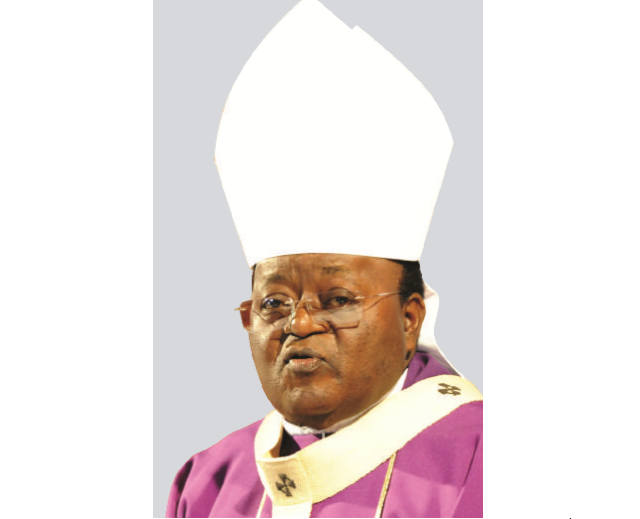
Catholic but different
The first thing you notice is that the mass at Mamre is nothing like you find in a typical Catholic church in Uganda. It is lively with worshippers engaging in a frenzy of jumping up and down, shouting `Amens’and clapping. Many of their songs of worship are also quite different from those used in the traditional Catholic churches. Then Fr. Kibuuka, assisted by several priests clad either red, purple, or white vestments depending on the occasion and season, ends the mass with a session called ‘fire fire’. This is an exorcist session meant to chase away demons. During the `Fire Fire’, the worshippers sing, clap, jump with even more vigour, and many often roll on the ground wailing and shout as if possessed.
Yet underlying it all, many of the rituals, liturgy, and vestments worn by the priests remain typically Catholic. The priests even administer Holy Communion.
After the service, Fr. Kubuuka explains that the main Catholic Church in Uganda is out of touch with the present. He says the dwindling census figures are “a warning to the Catholic Church that they should move with the times”.
“The type of worship in the Roman Catholic Church is too passive and they hide a lot of facts from their followers,” says Kibuuka, a stocky man, possibly in his early-40s, with a glowing round face, darting eyes, and the beginning of a mischievous smile on his lips.
The interview is held in the sacristy; the place where priestly vestments and sacred vessels, including those for administering Holy Communion, are kept. It is also where the priests prepare themselves for mass. It is a very holy place. Exactly like it’s done in the Roman Catholic Church, the faithful kept bowing whenever they pass the building as they go about their activities. At Mamre, however, the holy sacristy is a temporary-looking building made of iron sheets. In fact, the centre which sits on 10 acres of land with about three acres fenced off and used as the worshipping area, comprises mostly temporary buildings and a wooden roofed platform used as both the preacher’s pulpit and altar. But Kibuuka is undeterred by the makeshift look of his church.
Just outside the fenced worshipping area is a structure made of papyrus where female members of the church have a mushroom growing project.
“Churches should not only be thinking of getting from the people who come to worship but should have projects to get them out of poverty,” says Fr. Kibuuka.
He explains that Mamre refers to a sacred tree mentioned in book of Genesis in the Bible where Abraham built an altar for God.
He says cabinet ministers and other high ranking political and public servants are members of his congregation.
He says unlike the Roman Catholic Church, his church is attracting more priests and faithful. He says the congregation is over 20,000 and growing because “the faith we profess is authentic”.
“After I started Mamre, the prophets of doom gave us a month for it to collapse but now months down the road, the church is growing stronger and we have 12 priests,” he adds.
He says those who still treat him like a rebel from the Catholic Church are ignorant of Church history.
“Our apostolic succession, like in the Roman Catholic Church, can be traced back to St Peter and St James,” he says. He is referring to the Evangelical Orthodox Catholic Church (EOCC) to which he now belongs. Kibuuka says the EOCC leader or patriarch, Bishop Jerold Gliege, is equivalent to the Pope of the Roman Catholic Church in hierarchy.
Kibuuka explains that worldwide, the Catholic Church is split into 32 different rites with some of them having less than 10,000 followers and the Roman Catholic Church, which is the biggest with millions of followers worldwide, is just one of them. He says the Roman Catholic Church dominates the others because of historical reasons, including the power of the ancient Roman Empire and the wealth it acquired from its conquests and collection of taxes.
“Many people don’t even know that there are five different Catholic rites in Uganda,” Kibuuka explains.
He says apart from the Roman Catholic Church which is the biggest based at Nsambya and his EOCC which is based at Bwera in Kasese District, there is a Coptic Catholic Church rite based at Najjeera, the Greek Orthodox Church based at Namungoona, and the Brazilian Apostolic Church based in Jinja.
A search online shows the EOCC is a small denomination founded in 1979. It subscribes to Antiochian Catholicism which has its roots in Syria, was founded by St. Peter, and is part of the greater Eastern Orthodox Church. Today, it is said to have congregations spread across the United States, Canada, Sweden, Rwanda, Kenya, Uganda and Burundi.
Kibuuka says, unknown to many followers, all these catholic churches are united by three things which are the Creed or belief in the Holy Trinity of Father, Son, and Holy Spirit; the hierarchy of deacon, priest, and bishop; and belief in the seven sacraments.
Kibuuka says Mamre has another prayer Centre in Wankulukuku, Lubaga Division of Kampala district for the faithful who cannot travel to Janda in the week.
 The Independent Uganda: You get the Truth we Pay the Price
The Independent Uganda: You get the Truth we Pay the Price



